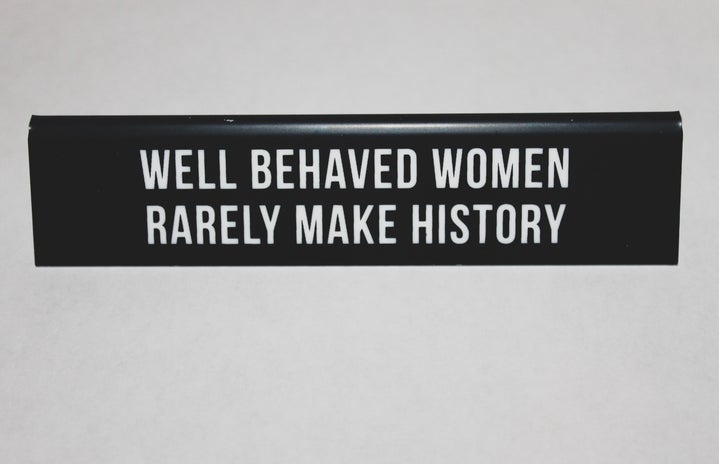It’s April and summer is nearly upon us. Brace yourselves for the onslaught of the “Are you beach body ready?” ads. The great overlords in the media repeatedly tell us that our enjoyment of what should be a season we students long for, is conditional upon whether our bodies are “Ready.” So girls, no frolicking in the sea or lazing around in the park unless you are properly tanned, toned and buffed. And don’t forget all that waxing… So much waxing.
Hair and its removal may, on the surface, seem a trivial matter. Most women do it as part of their beauty routine without thinking twice. However, it seems less trivial when one asks the question: why, when and who decided that the presence of bodily hair negatively impacts a woman’s perceived attractiveness? Even Queen Bey herself can be criticized for failing to ensure her armpits are shaven and smooth. As the image crop below would suggest, she apparently looked perfect… Except for her underarm hair.
(Image credit: conspiringvsthefamily.wordpress.com)
We have been programmed by our society to feel an obligation to wax unsightly hairs and invest both our money and time in achieving the perfect hairless body. That is not to say that we all blindly follow convention and are victims to this. When questioning my female flat mates on their own reasons behind their waxing/plucking/shaving habits they, (after an initial “that’s-a-weird-question” look) gave the following:
1.) “It’s more comfortable”
2.) “It feels cleaner”
3.) “Shaving makes me feel more feminine”
4.) “I like the feel of smooth legs.”
And all of these are perfectly fabulous reasons for doing so and also ring true with my own personal preferences. However, my flat mates did give a final reason: “I shave for fear of social judgment if I don’t.” It appears that the act of shaving has traveled down the unfortunate pathway from personal choice to universal expectation.
So, where did it all begin? Digging further into the hairier side of Google, I discovered that the idea of removing hair can be traced all the way back to 4000BC. Its purpose? An attempt to prevent the spread of disease and vermin, such as lice. Fast-forward 6000 to a society with high standards of cleanliness and this reason clearly no longer applies. Whilst the practical reason for the bald-body look still applies to some athletes who may shave for improvement in their performance, no such obvious practical motive seems to exist for the less sporty of us.
Men are certainly not free of society’s unrealistic expectations regarding appearance, with the increasingly prominent trend to shave their chest hair. However, the striking difference lies in the freedom men and women have in deciding whether or not to de-hair their body. In other words, women are met with far greater social penalty if they choose not to follow society’s expectations regarding bodily hair.
So, when did our society decide that if a woman were not to shave, she would be deemed either lazy and unhygienic, or participating in a rebellious form of conventional feminism?
The notion that shaving should be done to maintain an acceptable appearance apparently blossomed in 1915, with the beginning of a new fashion: sleeveless dresses. Up until this point, the fashion trends had never dared to show a woman’s armpit and subsequently the presence of armpit hair was rarely questioned. Harper’s Bazaar changed history with the release of an advert for the “Summer Dress,” which was coupled with a commercial for powder that would remove your “objectionable hair.”
(Image credit: utskirtsofthetwenties.wordpress.com)
And so began the trend of the hairless underarm, with its purpose being the up-keep of society’s latest desirable image (with legs soon to follow in the 1940s as a result of the rise of skirts’ hemlines).
Shaving promised to be a lucrative business opportunity: money was to be made, women’s hair must go! China has a mere 20 years of shaving history, compared to our 100 years. Arguably then, this trend stems from Western culture, with America leading the way. The Americanization of European culture was demonstrated when, following World War II, American razor companies wished to expand their market overseas. They encouraged the French to join them in their own personal vendetta against bodily hair.
So, perhaps it is time to up the ante on questioning the compulsory ideal of no bodily hair. Indeed, many celebrities have already taken it upon themselves to do so. For example, Madonna and Lady Gaga are leading the way on fully embracing and displaying the au naturel look.
(Image credit: gawker.com)
Perhaps in the same way America captained the hairless revolution, American celebrities can now use their global media influence to undo the previous work on the demonisation of bodily hair and focus on what should be society’s newest trend: the element of choice.
I am not saying all women must ditch the razors and waxing cream (neither am I suggesting that you need to get to the nearest supermarket and purchase some blue hair-dye for use à la Lady Gaga). The problem is with the pressure on women to conform to a singular notion of what is beautiful. The choice is yours and yours alone. It should be one that, quite simply, makes you feel your best. So hair or no hair, male or female, this summer, celebrate your body.


